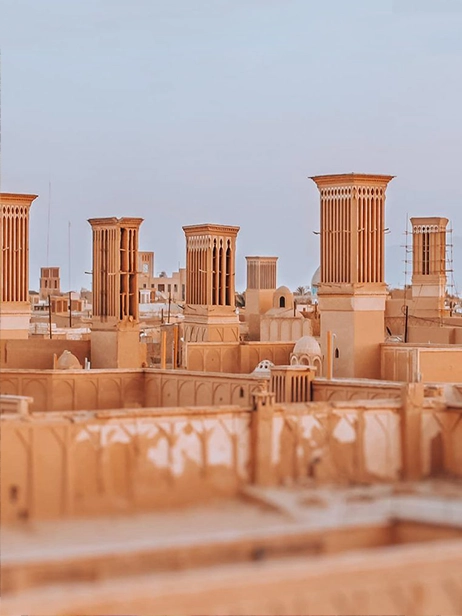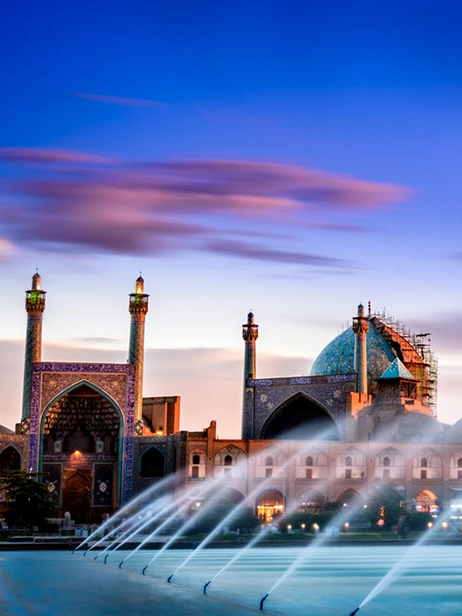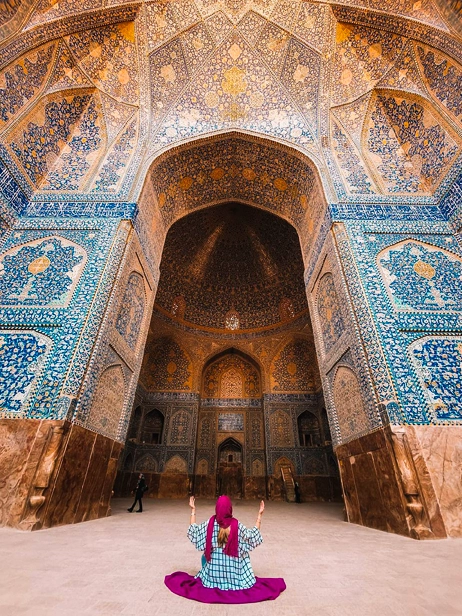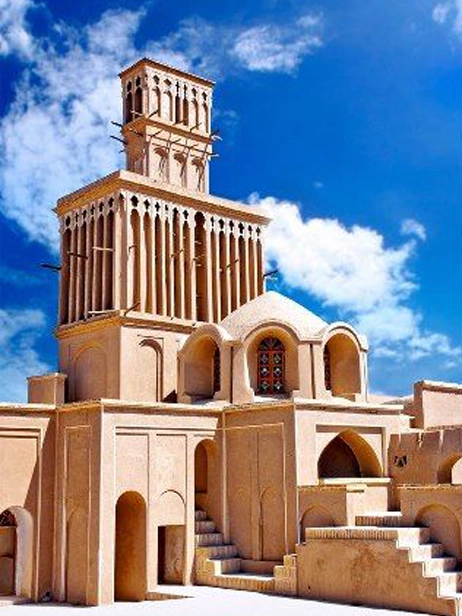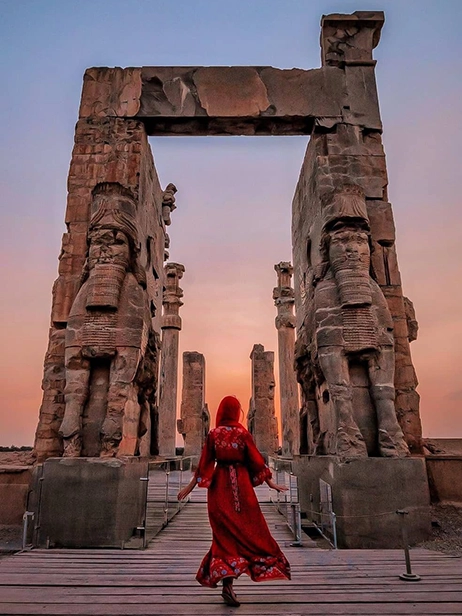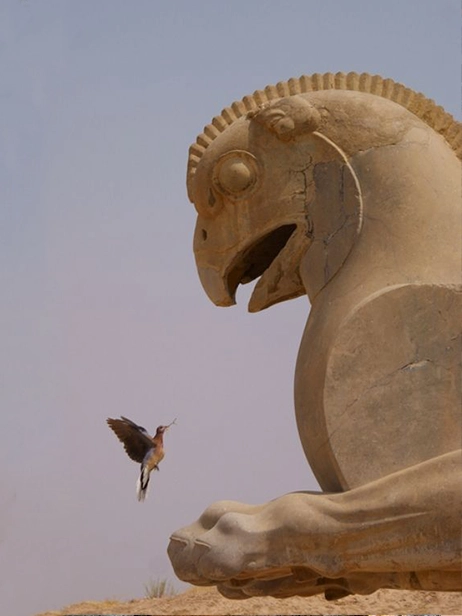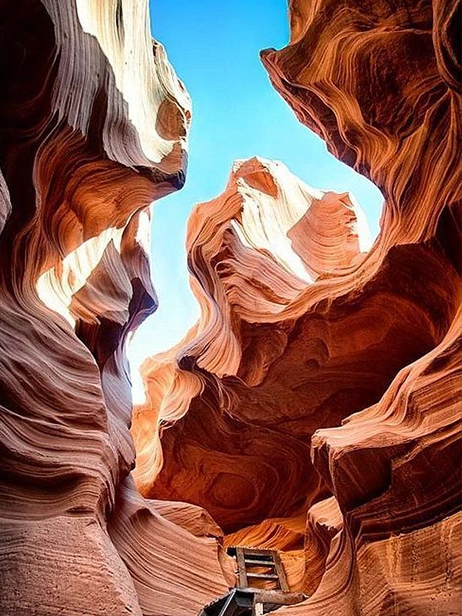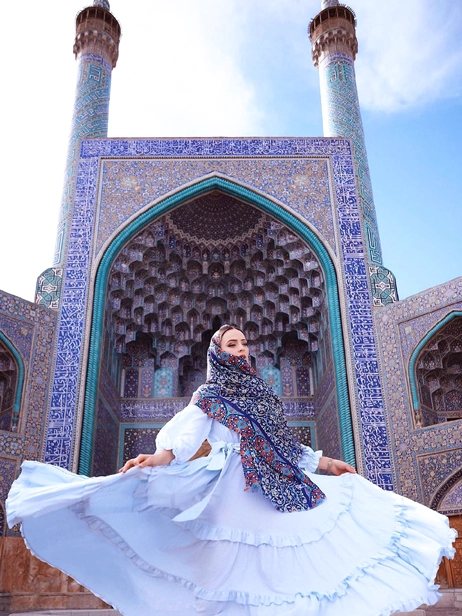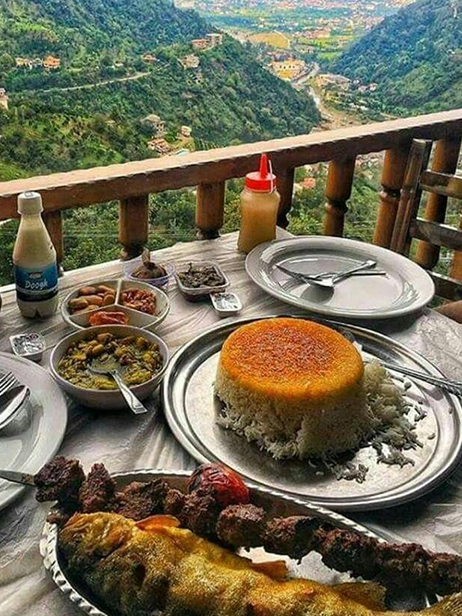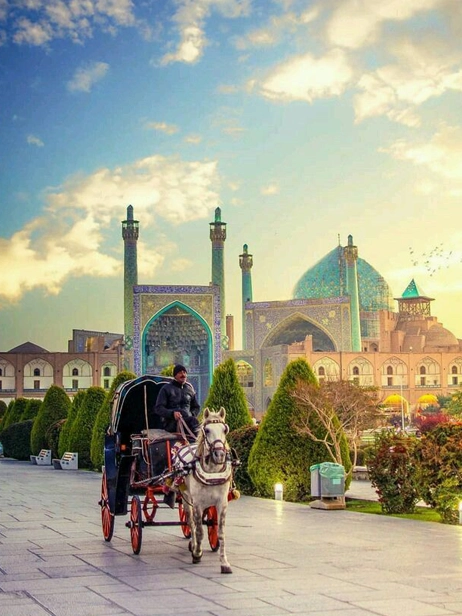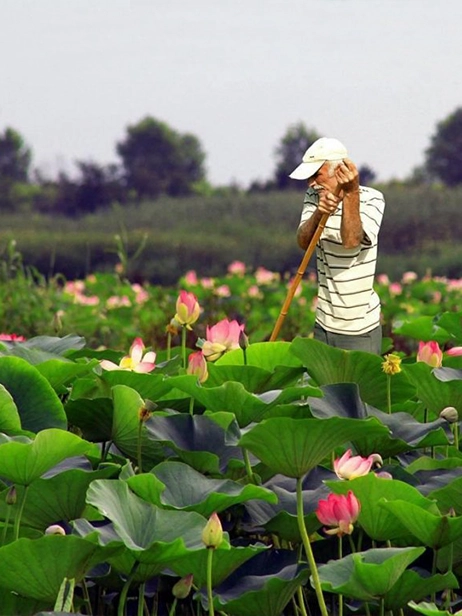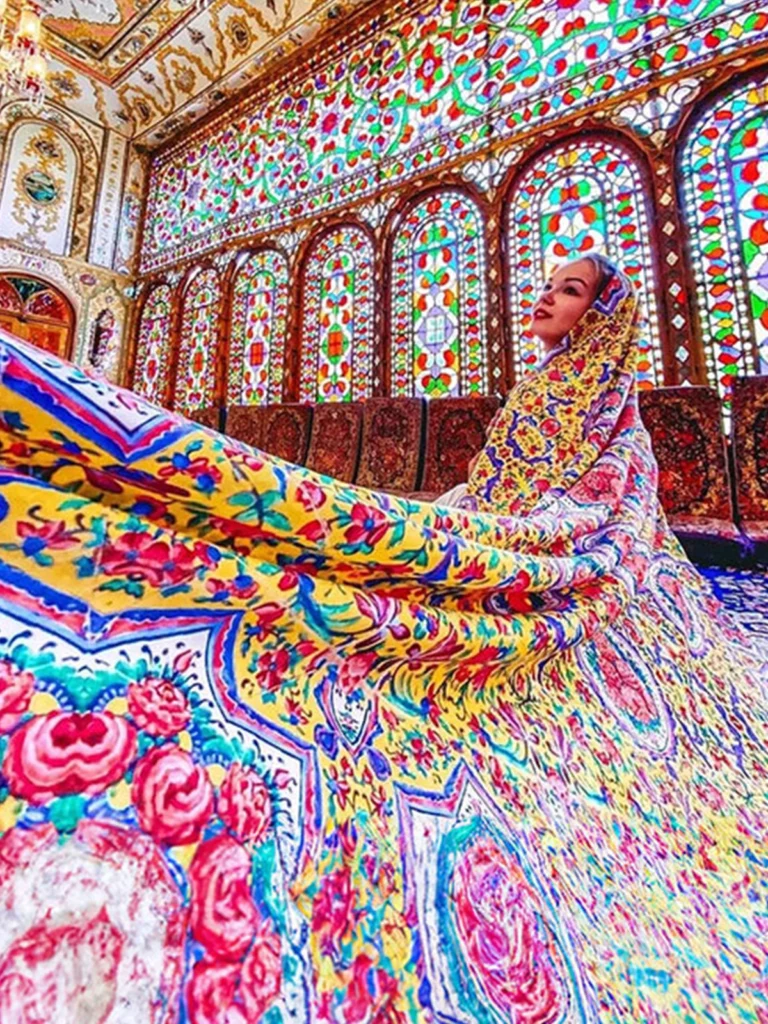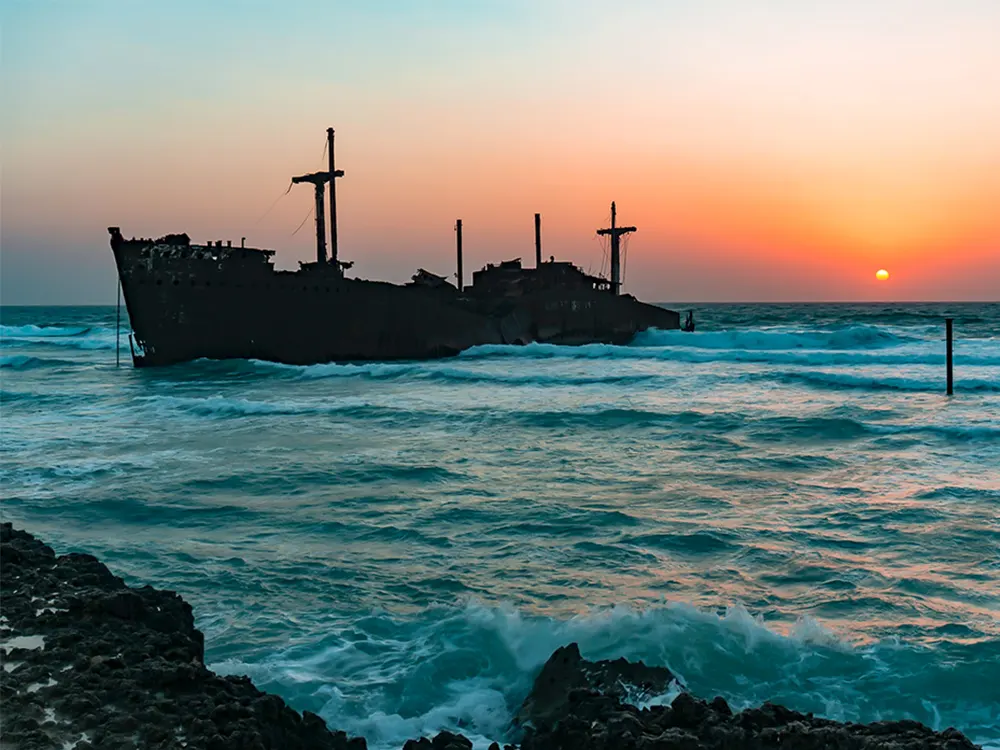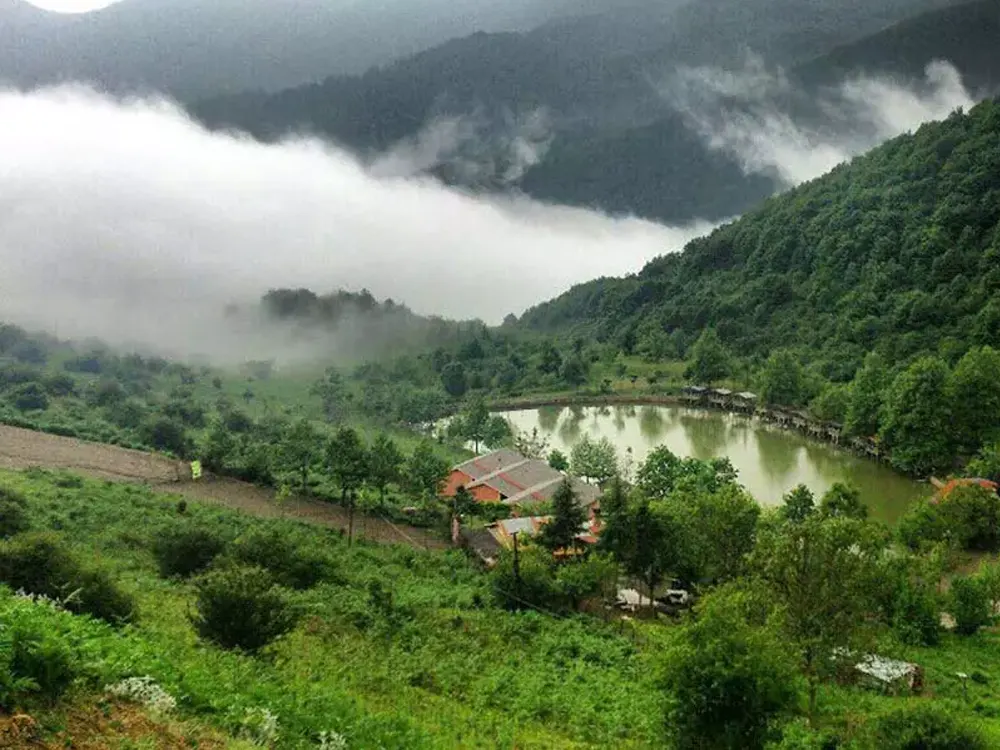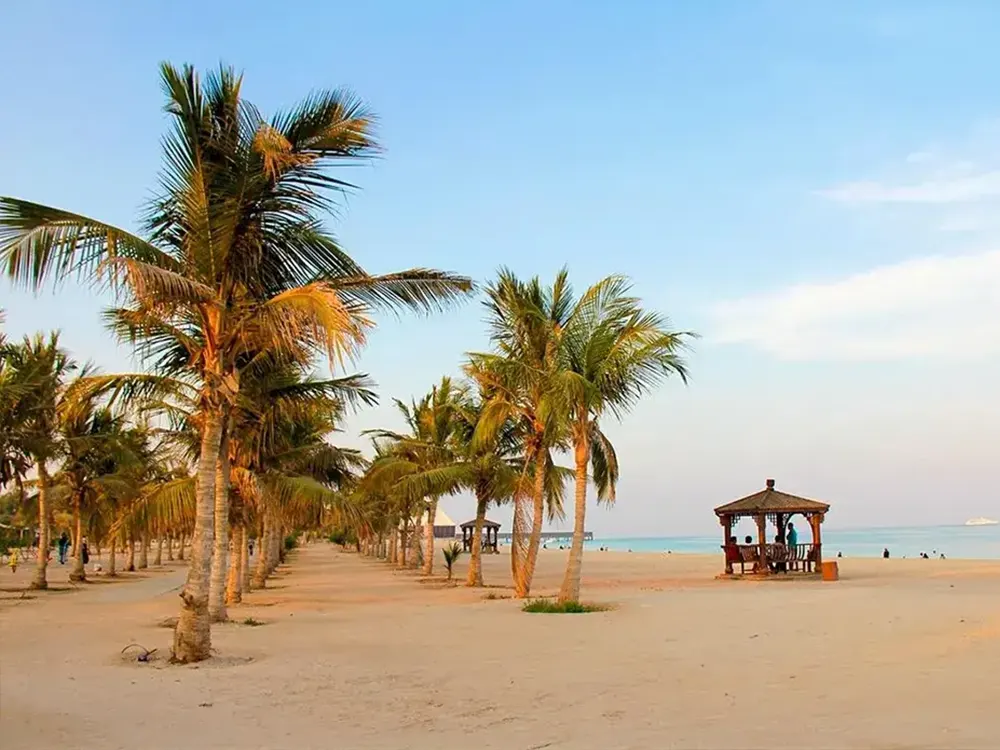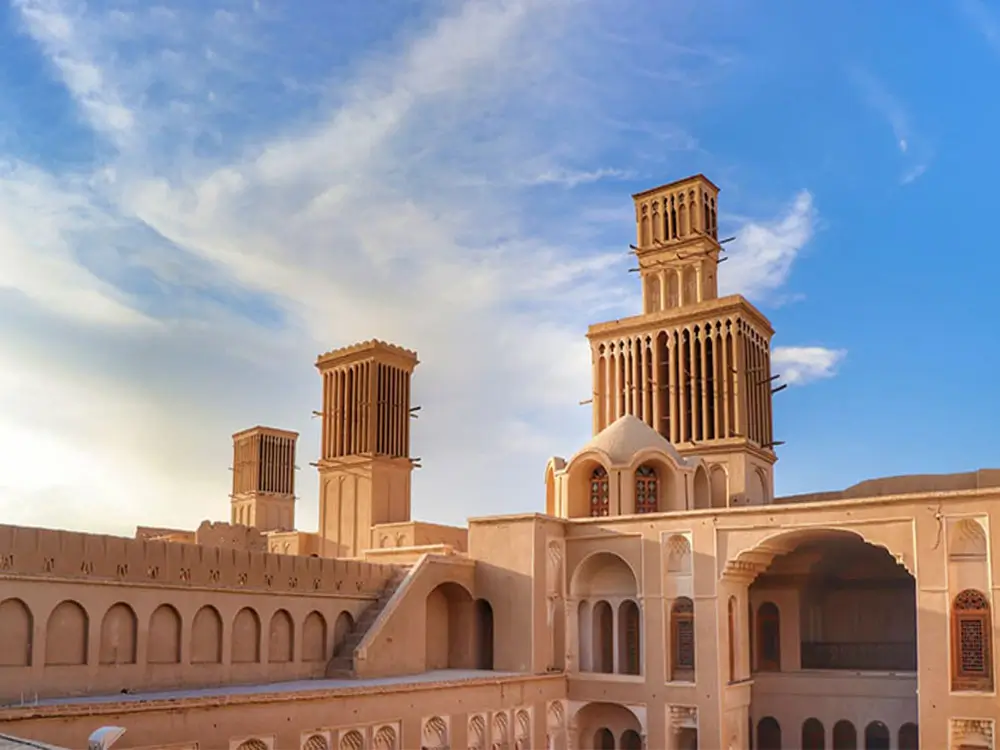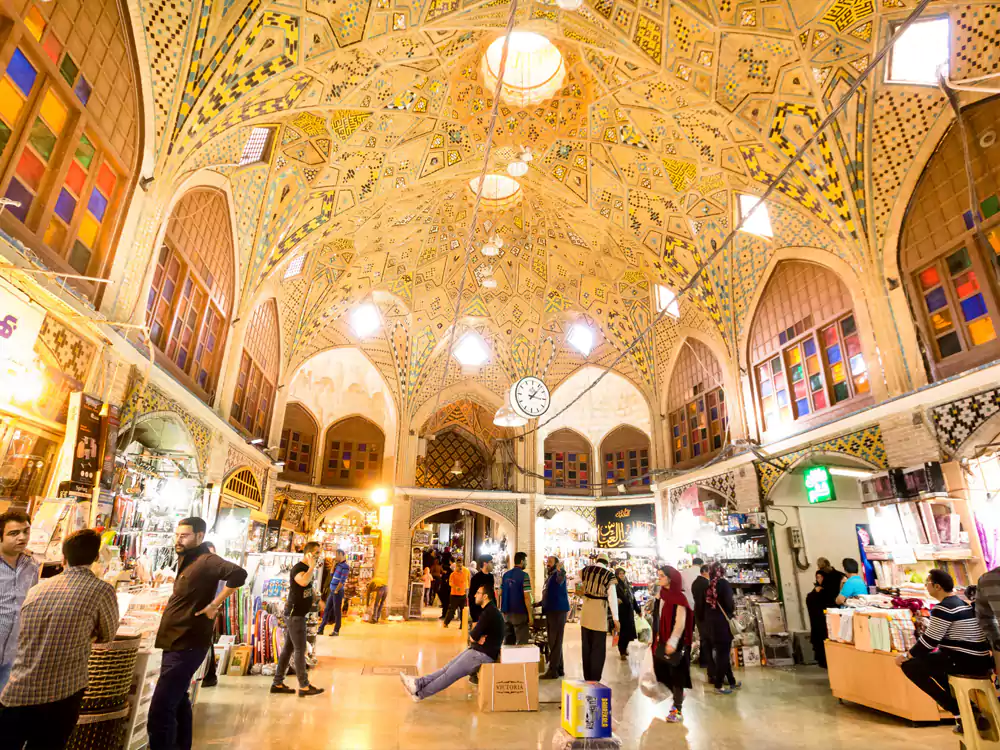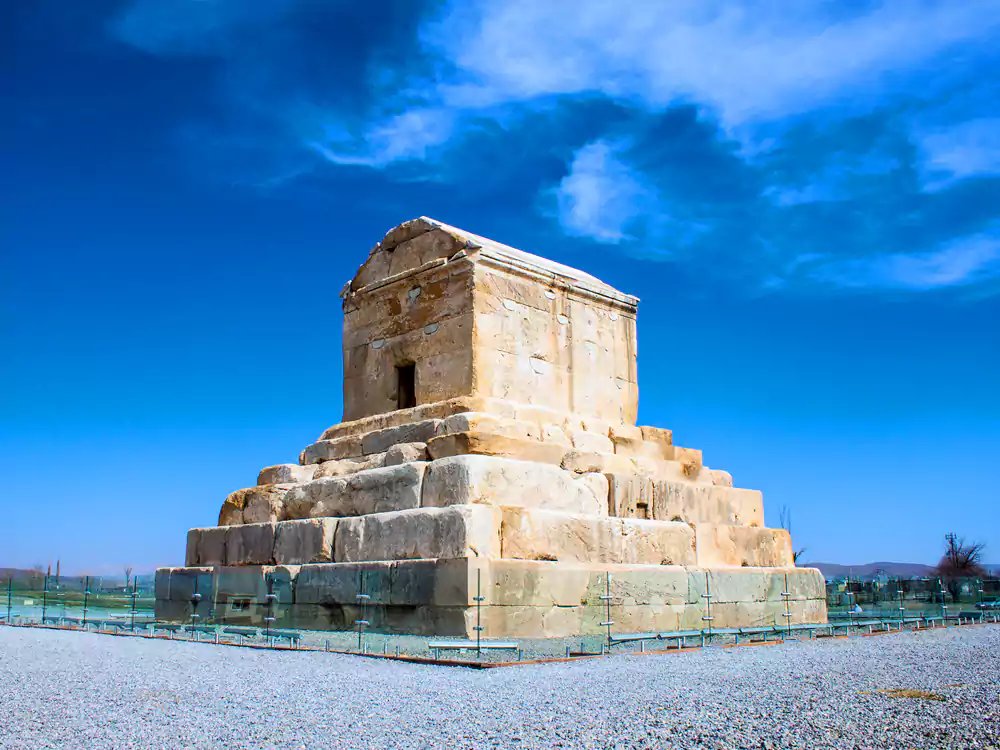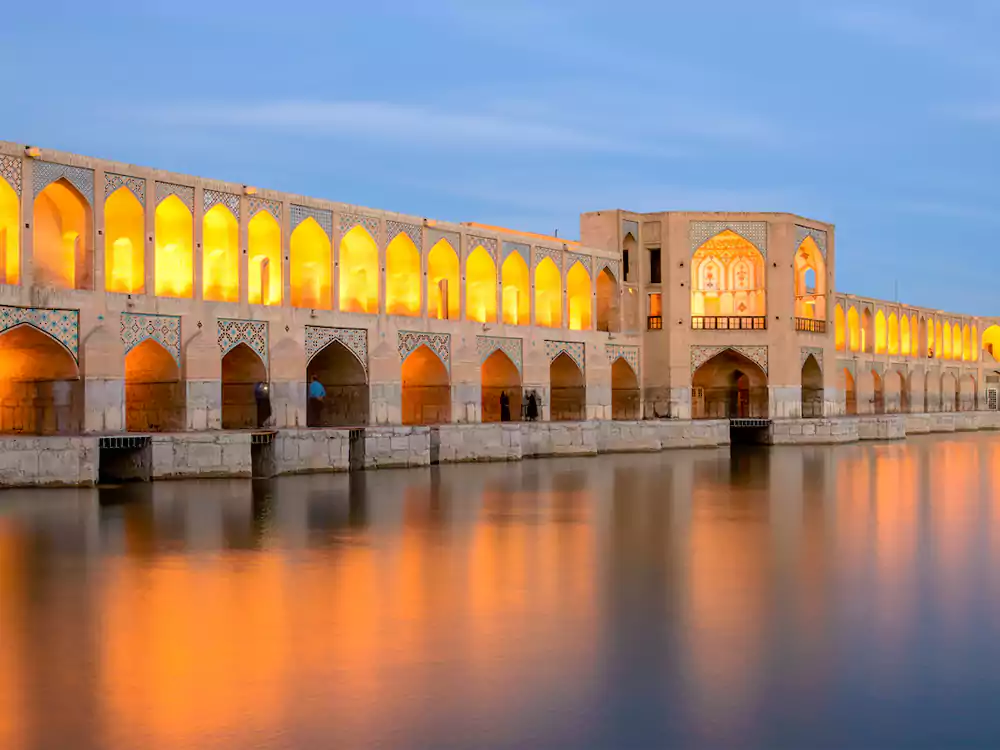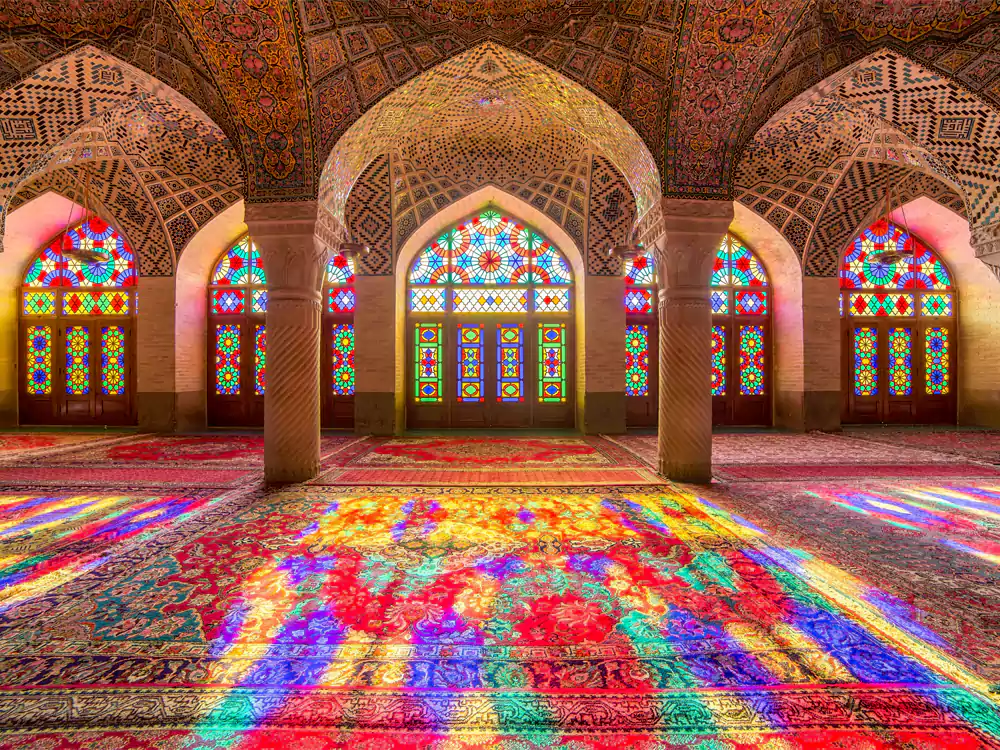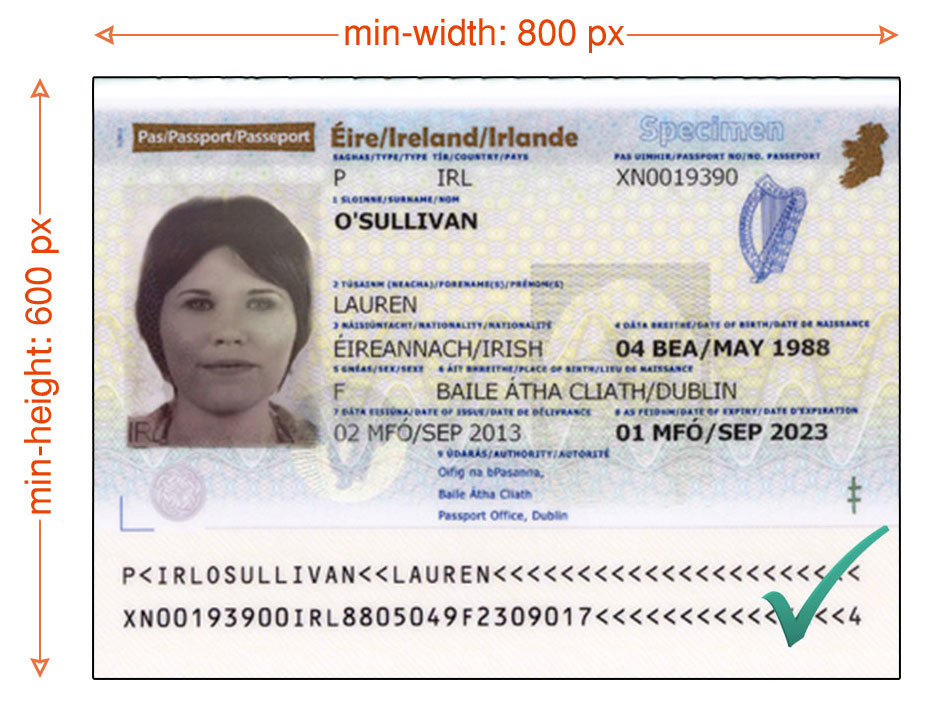Isfahan is the heart of Persian culture, visit it to appreciate the richness and diversity of our world. Cultural heritage, historical significance, and artistic traditions make it a unique destination that offers an unforgettable experience to all travelers. Keep reading to find out more about the Isfahan Travel Guide in 2023.
The stunning Islamic architecture, peaceful gardens, and grand bridges that cross the Zayanderud River in Isfahan have fascinated visitors from all over the world for centuries, earning it the nickname “Nesf-e Jahan,” meaning “Half of the World.”
Naqsh-e Jahan Square and the Jameh Mosque, both inscribed by UNESCO, epitomize the exceptional talent and creativity of Persian architects. The city’s lively bazaars, delicious cuisine, and hospitable people augment its allure, making it an indispensable destination for anyone traveling across Iran.
Isfahan is located in the middle of Iran and is celebrated for its stunning architecture, exquisite gardens, and vibrant cultural legacy, which have established it as one of Iran’s most sought-after tourist destinations. Each year, tourists from around the world flock to the city to discover its abundant historical sites, museums, and bazaars.
Isfahan Travel Guide in 2023:
In this Isfahan travel guide in 2023, we will provide you with all the information you need to plan your trip to this fascinating city.
Travel to Isfahan
Isfahan enjoys excellent connectivity with other major cities in Iran, both by road and air. The city has an international airport, Shahid Beheshti International Airport (IFN), with various flights to the major cities in Iran and some international destinations.
The airport is situated approximately 30 km away from the city center but visitors have access to taxis or public buses to reach the city. Isfahan is also well-connected to other major cities in Iran by a network of highways, making road travel a convenient option.
Buses are a popular mode of transportation for both locals and tourists, and several bus companies provide services to and from Isfahan.
Transportation in Isfahan
In this part of the Isfahan travel guide in 2023, we discuss transportation across the city. Once you are in Isfahan, there are various options available for exploring the city. Taxis are readily available and provide a convenient mode of transportation. However, it may be difficult for visitors who do not speak Persian to navigate the local buses, which can be crowded and confusing.
One of the best ways to discover Isfahan is on foot, as the historical center is relatively compact and many of the main attractions are located within walking distance of each other. Walking also allows travelers to experience the city’s unique atmosphere and uncover hidden gems that could be missed otherwise.
Isfahan has a relatively well-established transportation system, which consists of buses, minibuses, and taxis. The city’s bus system, working under the supervision of the municipality, covers most parts of the city and is affordable.
Taxis are also widely available. Additionally, Isfahan has a bike-sharing system called “Bike Isfahan,” providing users with the opportunity to rent bicycles from designated stations throughout the city.
Isfahan also offers a metro system, which runs from the northwest to the southeast of the city. For those who prefer to drive, Isfahan has well-maintained roads and highways connecting it to other parts of Iran. However, traffic congestion can be an issue, particularly during peak hours.
Overall, those who travel to Isfahan should know that its transportation system provides a range of options for getting around the city, including public transportation, taxis, bicycles, and personal vehicles.
Top tourist attractions in Isfahan
Isfahan is home to some of the most stunning Islamic architecture in the world, with many beautiful mosques, palaces, and gardens to explore. In this part of the Isfahan travel guide in 2023, we talk about some of the top tourist attractions of the city:
Naqsh-e Jahan Square:
Built during the Safavid dynasty, Naqsh-e Jahan Square is a significant public place. It is surrounded by important buildings like the Ali Qapu Palace, Sheikh Lotfollah Mosque, and Jameh Mosque. The location has formerly held festivals, parades, and polo matches and is currently a popular gathering place for locals and tourists. It has been designated a UNESCO World Heritage Site.
Imam Mosque:
Imam Mosque, often referred to as Shah Mosque, is a significant historical site in Isfahan. It was constructed during the Safavid dynasty in the 17th century and is renowned for its exquisite architecture, skillful tilework, and calligraphy. The mosque features remarkable wall carvings, a huge dome, and minarets. It attracts tourists from all over the world. The mosque has been listed as a World Heritage site by UNESCO.
Sheikh Lotfollah Mosque:
Sheikh Lotfollah Mosque was built in the 17th century during the Safavid dynasty as a private mosque for the royal court. The mosque is well known for its intricate tilework, beautiful calligraphy, and unique design, which includes a dome that changes color. It is smaller than other mosques and lacks a courtyard. It is well known for having a tranquil atmosphere. The mosque is a popular tourist destination and is listed as a UNESCO World Heritage site.
Chehel Sotoun Palace:
The Chehel Sotoun Palace was constructed in the 17th century during the Safavid era. This former royal pavilion and reception area is renowned for its architecture, ornamentation, and frescoes. The palace is surrounded by a reflecting pool, and inside are beautiful murals that depict Persian history, literature, and mythology. It is surrounded by a lovely garden and has been recognized as a UNESCO World Heritage monument since 2011.
Vank Cathedral:
In Jaffa, Isfahan, there is a 17th-century Armenian Apostolic Cathedral called Vank Cathedral. It has exquisite frescoes and tilework, which combines Armenian and Iranian architectural elements, and is embellished with paintings showing biblical stories and Armenian symbols. The cathedral is a well-known tourist destination as well as an important religious and cultural monument in Iran.
Hasht Behesht Palace:
The Hasht Behesht Palace was constructed in the 18th century during the Safavid era. It has an eight-sided design and is renowned for its beautiful architecture, frescoes, and tilework. The palace, which is now a museum and a popular tourist destination in Isfahan, is surrounded by a lovely garden with water basins and fountains.
Si-o-se Pol Bridge:
Also known as the Bridge of 33 Arches, is a historical bridge in Isfahan. It has 33 arches, two storeys, and was constructed across the Zayanderud River in the 17th century during the Safavid era. It was utilized by pedestrian and vehicular traffic, as well as business owners selling their goods. The bridge is renowned for its distinctive design, exquisite tilework, and illumination at night, which casts a magnificent reflection in the river.
Jameh Mosque:
With origins reaching back to the eighth century, the Jameh Mosque is one of the nation’s oldest mosques. It is renowned for its magnificent paintings, complex tilework, and breathtaking architecture. The mosque, which still serves as a center of Islamic learning and worship, has a sizable courtyard with arcades and a reflecting pool. It is an important cultural and religious monument in Iran and has been designated a UNESCO World Heritage site.
Bazaar-e Bozorg:
Also known as the Grand Bazaar, it is a historical bazaar in Isfahan. It is one of the largest and oldest bazaars, which was constructed in the 17th century during the Safavid era. The bazaar has magnificent tilework, soaring ceilings, and lovely domes that contribute to its spectacular architecture. It is a well-liked tourist destination and is divided into sections with specific merchandise.
Chaharbagh Avenue:
Chaharbagh Avenue is lined with trees, gardens, and fountains. It was constructed in the 17th century during the Safavid era and is famed for its spectacular architecture, lovely stores, and classic teahouses. The avenue is a popular tourist destination as well as the center of business and culture in Isfahan.
Where to stay in Isfahan
There are numerous options in Isfahan to accommodate all preferences and budgets. Since the majority of the city’s prominent attractions are concentrated in and around Naqsh-e Jahan Square and the historical center of Isfahan, these regions are the most sought-after places to stay. In this part of the Isfahan travel guide in 2023, we introduce some of the best hotels.
Some of the top hotels in Isfahan include:
- Abbasi Hotel: This historic hotel is located in a beautiful traditional building and is known for its stunning tilework and luxurious amenities.
- Kowsar Hotel: This hotel is located near Naqsh-e Jahan Square and offers comfortable rooms and great views of the city.
- Safir Hotel: This modern hotel is located in the historical center of Isfahan and offers comfortable rooms and a range of amenities.
- Setareh Hotel: This hotel is located near the Vank Cathedral and offers comfortable rooms and a beautiful garden.
- Azadi Hotel: This hotel is located near the Si-o-se Pol Bridge and offers comfortable rooms and great views of the river.
For choosing the best hotels in your Isfahan Tour contact us. our experts will help you all the way.
Where to eat in Isfahan
Isfahan is known for its delicious Persian cuisine, which features a range of meat, rice, and vegetable dishes flavored with spices and herbs. In this part of the Isfahan travel guide in 2023, we introduce some of the best restaurants.
Some of the top places to eat in Isfahan include:
- Shahrzad Restaurant: This restaurant is located in the historical center of Isfahan and offers a range of traditional Persian dishes, including kebabs, stews, and rice.
- Sofreh Khaneh Delgosha: This restaurant is known for its beautiful garden setting and its range of traditional Persian dishes, including lamb shank, stuffed eggplant, and saffron rice.
- Malek Soltan larch’ Bashi: This restaurant is located near Naqsh-e Jahan Square and is known for its delicious kebabs and other meat dishes.
- Naghsh-e Jahan Restaurant: This restaurant is located in a traditional Persian house and offers a range of traditional dishes, as well as live music and dance performances.
- Falafel Bazaar: This popular street food stall is known for its delicious falafel sandwiches and other Middle Eastern snacks.
Isfahan Climate
Those who write about Isfahan should not ignore its climate. Isfahan has a semi-arid climate, which means it has hot, dry summers and quite cold, relatively dry winters. The city is characterized by its continental climate, which is influenced by its high altitude and distance from the coast. In the summer months, temperatures can reach up to 40°C (104°F) during the day, but it drops to around 20°C (68°F) at night.
Winters in Isfahan are quite cold, with temperatures averaging around 5°C (41°F) during the day and dropping to around -5°C (23°F) at night. The city receives very little rainfall throughout the year, with the majority of precipitation occurring in the winter months.
Dust storms are also probable in Isfahan, particularly during the summer months, due to its location which is near desert regions. However, Isfahan’s weather can be delightful, with mild to cold winters and pleasant summers, making it an ideal destination for travelers seeking comfortable weather conditions.
Isfahan souvenirs
Bringing back souvenirs is the best way to cherish the memories of your trip. Isfahan is known for its rich cultural heritage and traditional handicrafts, making it a great destination for souvenir shopping.
herefore, those who travel to Isfahan need to know that the city offers a wide variety of unique and beautiful souvenirs that reflect its rich cultural heritage and traditional craftsmanship. In this part of the Isfahan travel guide in 2023, we introduce some of the city’s best souvenirs:
- Persian Carpets and Rugs: Isfahan is famous for its intricate, hand-woven carpets and rugs that feature traditional Persian designs and patterns.
- Miniature Paintings: Isfahan is home to many talented miniaturists who create beautiful paintings on paper, ceramics, and other surfaces.
- Inlaid Woodwork: Isfahan is known for its exquisite inlaid woodwork, which features intricate geometric designs created by embedding small pieces of wood, bone, or metal into a larger piece of wood.
- Traditional Pottery: Isfahan is home to many skilled potters who create beautiful ceramics using traditional techniques and designs.

- Gaz: This sweet and chewy confection made from pistachios and rosewater is a popular treat in Isfahan and makes for a delicious souvenir.
- Silverware and Copperware: Isfahan is known for its high-quality silver and copperware, including teapots, trays, and decorative items.
- Embroidery: Isfahan is home to many talented embroiderers who create beautiful designs on clothing, tablecloths, and other textiles.
Some useful travel tips to Isfahan:
- Dress modestly: When visiting Isfahan, it’s important to dress modestly because Iran is a conservative country. Women should cover their hair with a scarf, put on long sleeves, and put on knee-length skirts or pants. Men should avoid wearing shorts and sleeveless shirts.
- Respect local customs: Iran is a Muslim country, and it’s important to respect local customs and traditions. This includes avoiding public displays of affection, not drinking alcohol in public, and refraining from smoking in some public places.
- Learn some Persian: While many Iranians speak English, it’s always a good idea to learn some basic Persian phrases to help you get around and communicate with locals.
- Stay hydrated: Isfahan can get very hot in the summer, so it’s important to drink plenty of water and stay hydrated throughout the day.
- Prayer times: Prayer times are observed in Isfahan. During prayer times, some shops and restaurants may close, and it’s important to be respectful of all Islamic rituals.
In summary, Isfahan is a beautiful city that boasts a wealth of cultural heritage and some of the most exquisite Islamic architecture worldwide. With its diverse offerings in history, art, and cuisine, Isfahan caters to all interests. We hope that this Isfahan travel guide in 2023 has equipped you with all the necessary information to plan your visit to this incredible city. Enjoy your time exploring the rich history, culture, and beauty of Isfahan.






